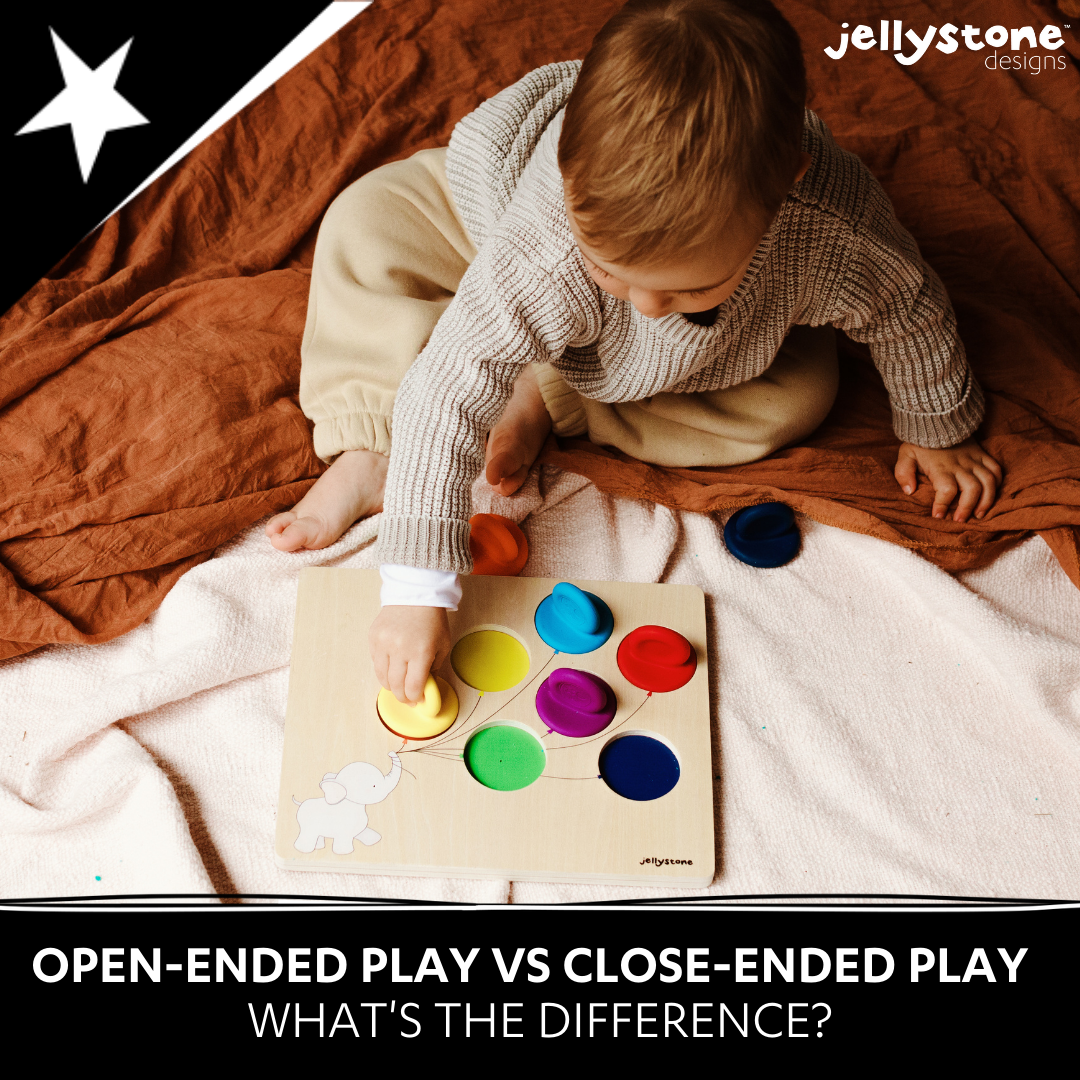
· By Amy L.
Open-Ended Play and Close-Ended Play: What's the Difference?
Children learn through play. Through play, they can unlock key developmental milestones and access new skills; problem solving, hand-eye coordination, critical thinking and more! This play can take many forms, it can be structured or unstructured, self-directed or guided, planned or unplanned. This dichotomy is often what perturbs parents when they are buying toys for their kids:
Should I buy a toy that has a specific goal so they can learn a specific skill or should I buy a toy that is more open to creative expression?
Essentially, when parents ask this question, they are asking themselves, should I encourage close-ended play or open-ended play? You might be asking what those terms mean so we will explore them in more detail in the next sections.
Open-Ended Play
Open-ended play is any kind of play that is free-form and flexible and allows children to direct activities without the imposition of rules and instructions. In open-ended play, there is no ‘right’ or ‘wrong’ way, children are free to make their own decisions and follow their imagination. A ball isn’t just a ball, it's a planet or a hot potato or a crystal orb. A block isn’t just a block, it's a building, a domino or even a drum.
What are the benefits of open-ended play?
When children are able to direct their own playtime, they are exercising their decision making abilities. This can be a key way to help your child grow their self-esteem as they become more independent and autonomous within the play space and beyond. This is also key to growing their confidence in group scenarios as they learn to interact with others more constructively and creatively.
Since children are not bound by rules in open-ended play, they are also able to unleash their creativity in ways that may be limited by more structured activities or games. They are not afraid to ‘fail’ and so they may explore new ways of engaging with toys that might otherwise have been perceived as ‘wrong’ or ‘incorrect’ but actually reflect their unique paths of their imagination.
Close-Ended Play
Close-ended play is play that has a clear objective and outcome. There is a definite beginning, middle and end stage and a specific outcome is expected to happen. Close-ended toys are toys that have a specific purpose and an intended way to use them. For example, a puzzle where the objective is to complete the image or a shape sorter where the objective is to put all the pieces in the correct slots.
What are the benefits of close-ended play?
As close-ended play is generally more structured and deliberate, it helps a child learn how to follow instructions and complete tasks. They can gain a sense of purpose and achievement by undertaking the activity, experiencing challenges and then overcoming them. This in turn feeds into their growing sense of ownership and achievement.
Close-ended play is great for building attention span and concentration as children have to focus to reach the desired objective. Similarly, they learn from their mistakes through a process of self-correction; identifying when something is wrong or incorrect and then trying a different way.
Close-ended play promotes skill building as each material aims at teaching and honing a specific skill, whether that’s counting, writing, ordering etc. By isolating one skill at a time, children can really focus and master that skill.
How to Encourage Open-ended and Close-ended Play:
So, what is the answer? Should I encourage open-ended play or close-ended play at home?
Well, really, the answer should be, why choose? Children need a mixture of open-ended and close-ended play in their lives. They need opportunities to fully unleash their creativity and direct their own exploration but they also need guidance and structure to practice and develop certain skills. Plus, there are plenty of toys that provide opportunities for both open-ended play and close-ended play so you can get the best of both worlds.
Here are some of our recommendations;
- Jellystone Designs’ Balloon Colour Sorter ($39.95) is a great example of toy suited to both open-ended and close-ended play. Children are encouraged to match the silicone tops to the matching colour on the wooden board to build colour recognition and hand-eye coordination. At the same time, the silicone tops can be used as little characters in a story or they can be used to create stamp-like patterns in playdough!
- Jellystone Designs’ Rainbow Stacker ($24.95) is another great open-ended and close-ended toy! The main objective of the toy is for children to stack the silicone rings in order to create a small tower. However, there are so many other ways to play with them; you can thread a playsilk through them, line them up in order and count them, use them as stamps in playdough, chew on them as teethers and much more!
We hope this article has helped clear up the difference between open-ended and closed-ended play!
For more info, please visit The Jellystone Blog.
If you have any questions or comments, feel free to drop one in the comments section below.



